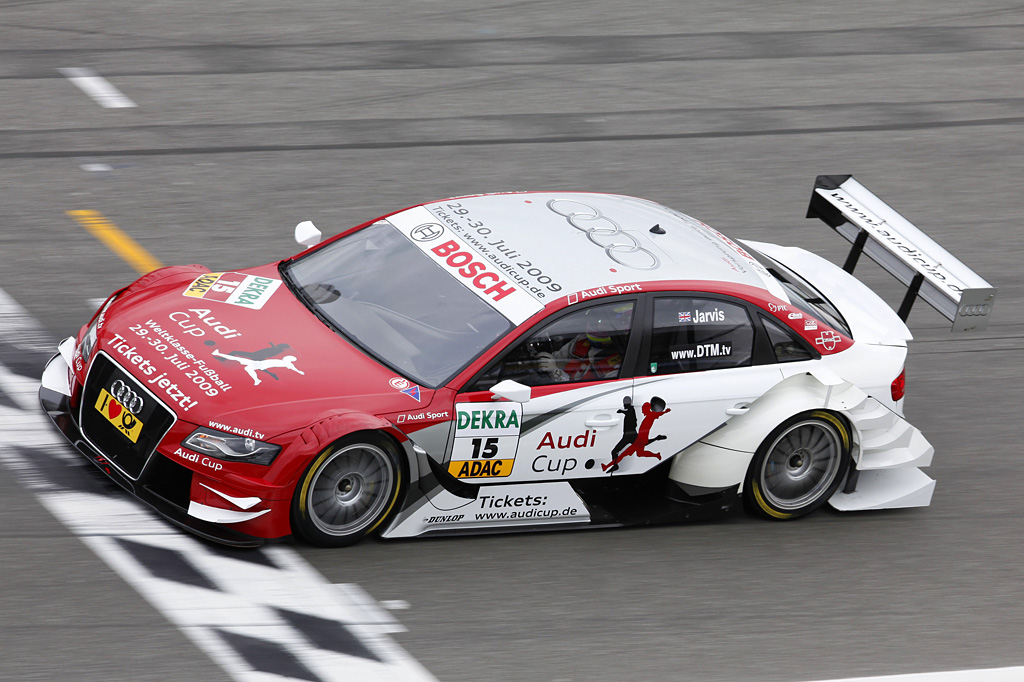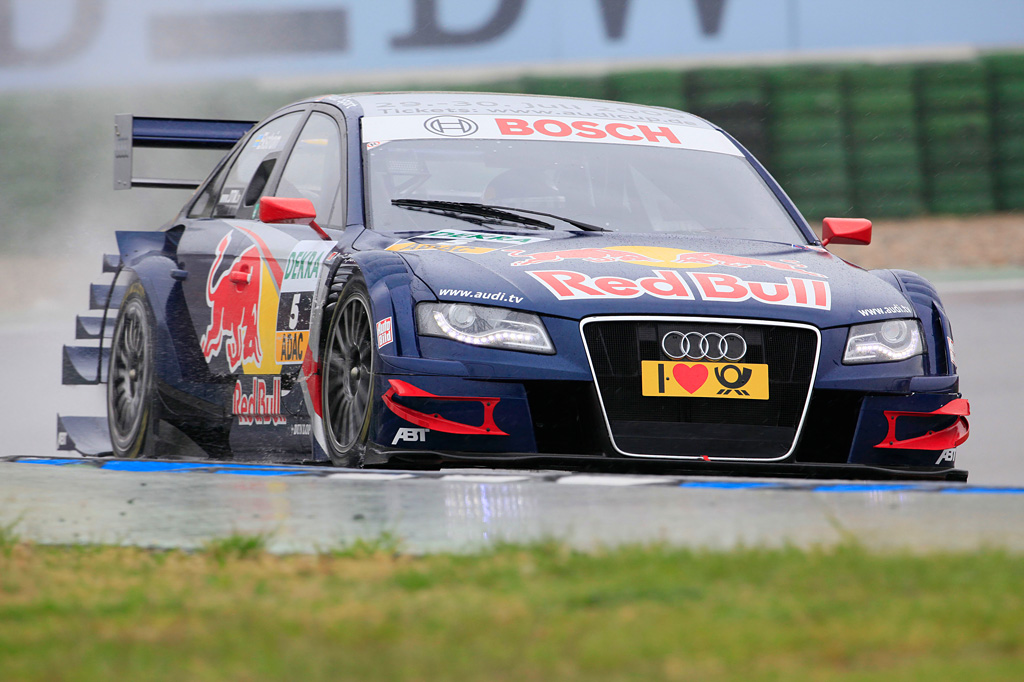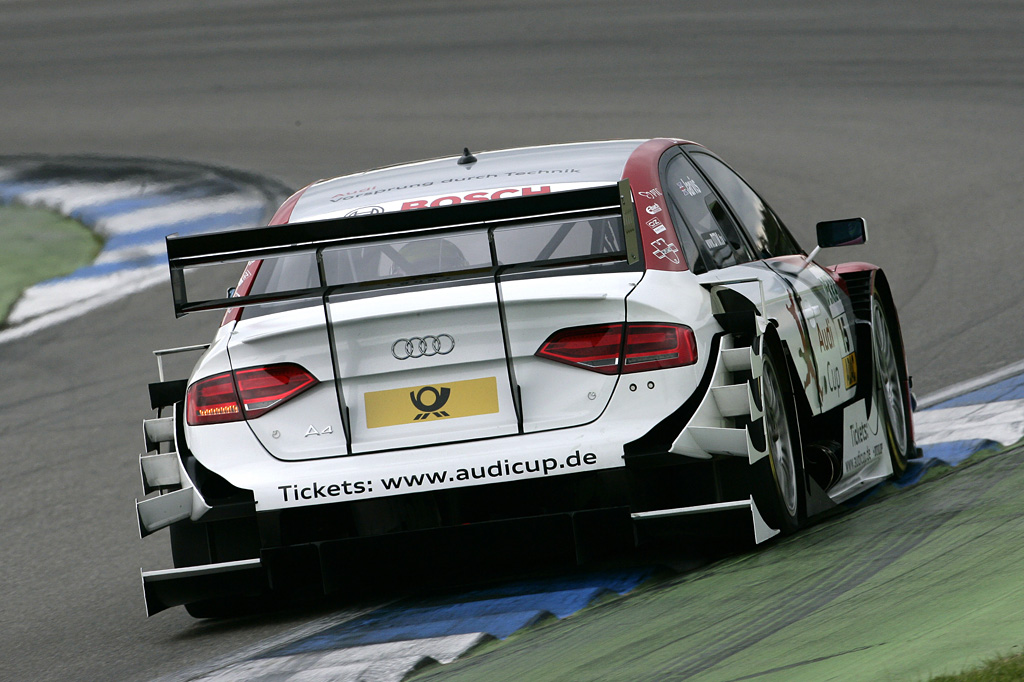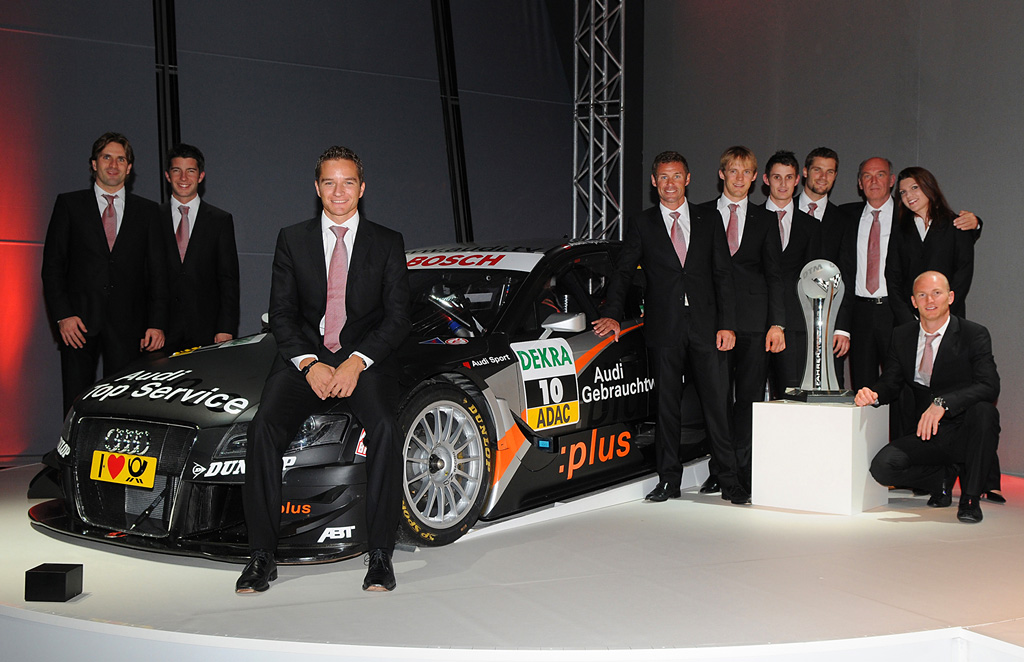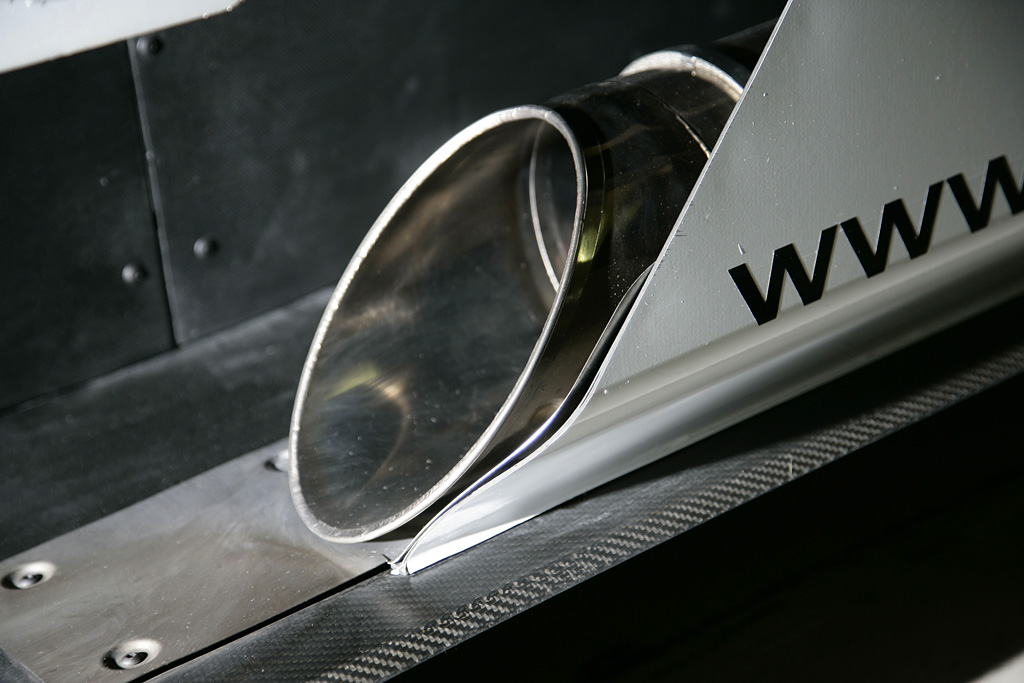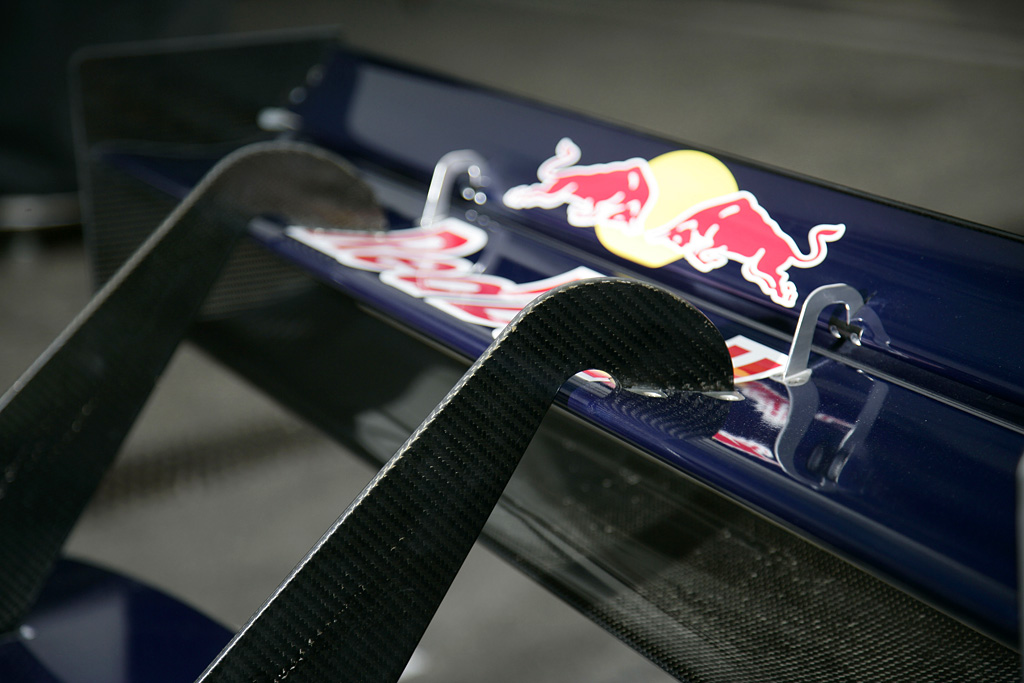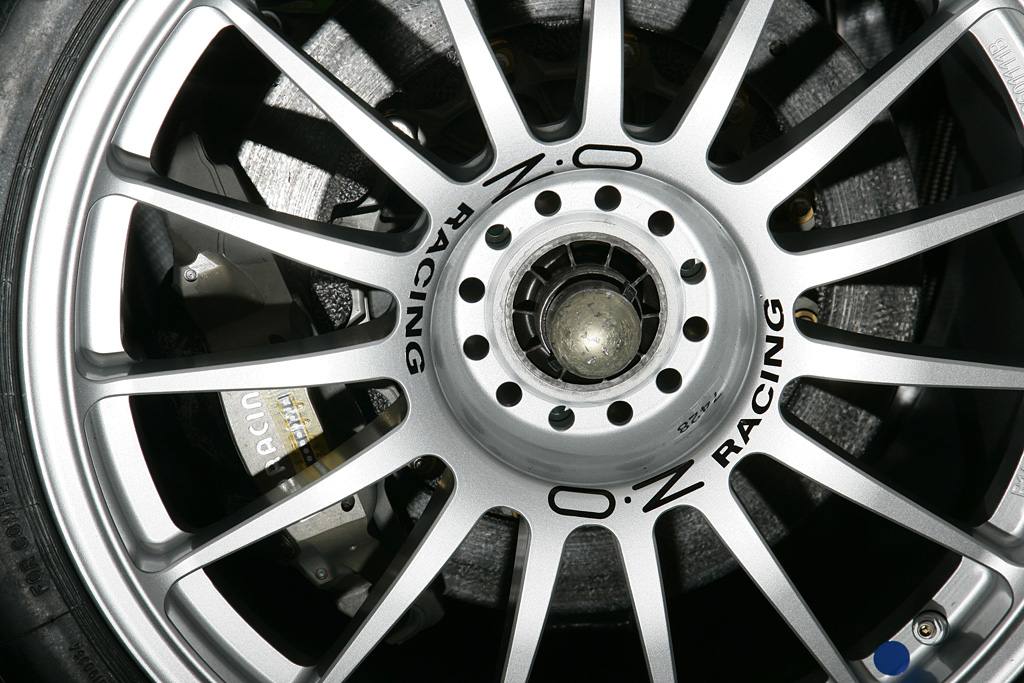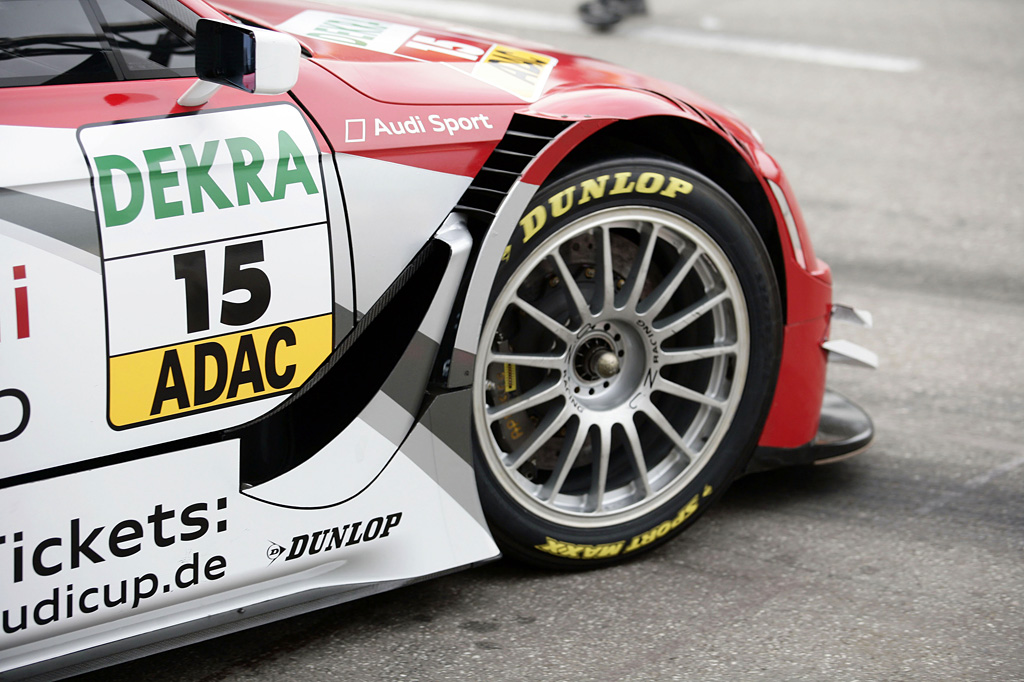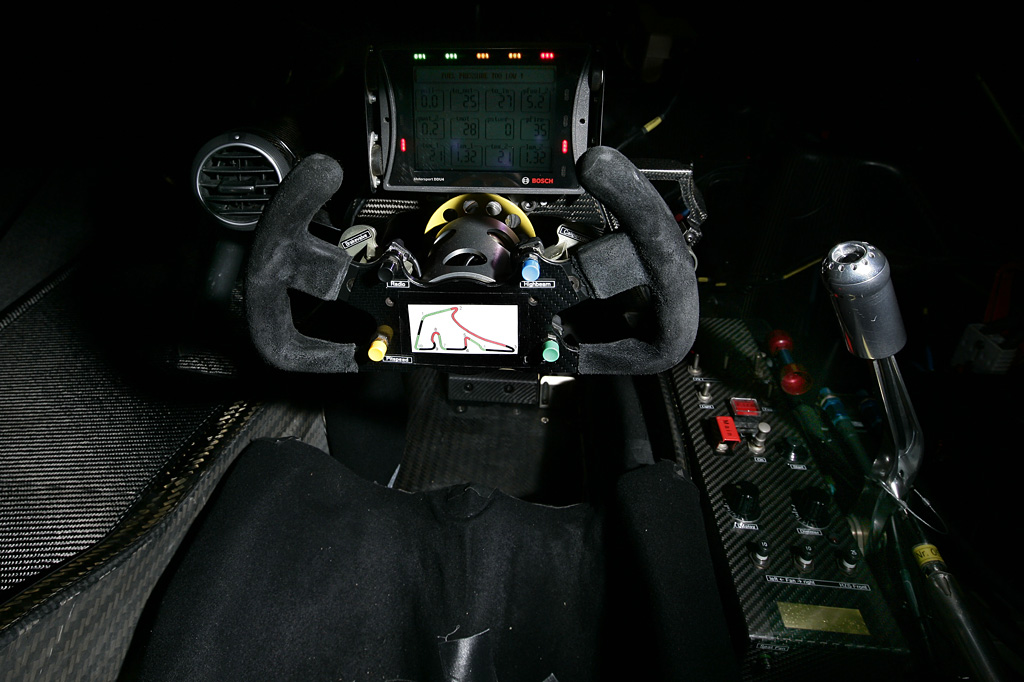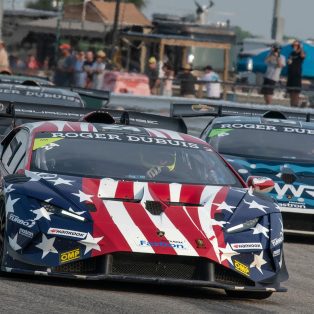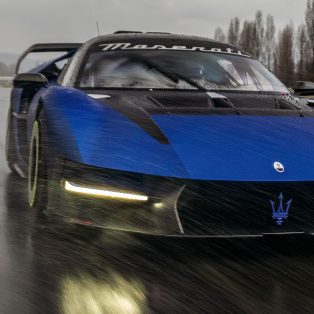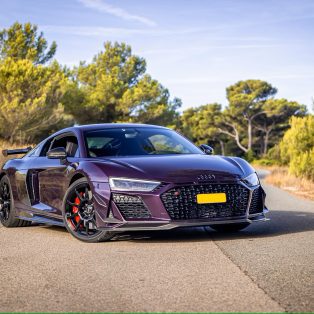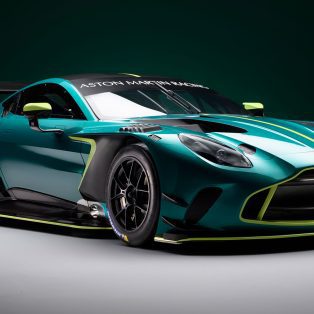2009 Audi A4 DTM R14 plus
The Audi A4 DTM introduced last season set a record at its début: With six victories, eight best times in qualifying and the title win, it was the most successful DTM vehicle based on the A4, which Audi has designed and built since its return to the DTM in 2004. In accordance with the internal model designations, R11 (2004), R12 (2005), R12 plus (2006), R13 (2007) and R14 (2008), the current R14 plus (2009) represents the sixth generation of the vehicle.
The engineers from Audi Sport in Ingolstadt and Neckarsulm were faced with a difficult task: the challenge of improving the champion’s car from the year before yet again, within unchanged confines of the regulations. All of the principal design features of the touring race car, which is based on a tubular frame and a carbon fiber shell for the driver, and powered by a 460-hp four-liter V8 engine, have remained the same.
“The most clearly visible modification that is visible when the hood is open concerns the air box above the engine,” explains Ulrich Baretzky, Head of Engine Development at Audi Sport. It is a consequence of the requirements that arose
from a new cooling air passage at the vehicle’s front. The charge changing process – meaning the inflow of fresh gas following the outflow of exhaust gas – has been optimized by the new intake plenum. Audi has also achieved improvements in torque development and power output, in other words the engine’s drivability. One of many other detailed optimizations concerns the more favorable oil circuit. When summing up the total of their achievements, the developers’ have to make a realistic assessment. “Basically, in the sixth year of continuous development, the potential of any engine design has been fully exploited,” says Ulrich Baretzky.
Wolfgang Appel, Head of Vehicle Development, and his team clearly defined some focal areas with respect to the development of the other components of the car as well. “Even though we compiled a list of about 80 minor or major items on the whole vehicle, we clearly concentrated our efforts on aerodynamics,” says Appel. “We modified various aspects of the air flow around the vehicle, the diffuser and the flow through the engine compartment.” A rear wing mounted from
the top, which promises to provide better flow characteristics, is a conspicuous feature. This idea made its début with the Audi R15 TDI Le Mans sports car this year. The aerodynamic effects of new solutions are first calculated using computational fluid dynamics (CFD), followed by model wind tunnel testing and – ultimately – by testing at AUDI AG’s full-scale wind tunnel.
Furthermore, the engineers focused their attention on all aspects which contribute to maintaining the performance capability of the race car at consistent levels across the racing distance of typically more than 60 minutes. Two
significant factors determine the sporting result: the way the car handles the deterioration of the tires over the course of time as well as the reduction in vehicle mass caused by the consumption of the fuel in the tank. New components of the braking system are an additional aspect. The British manufacturer AP, who equips all DTM vehicles with a standard system, presents clearly less massive brake calipers for the 2009 season. “This influences our choice of aerodynamic flow toward the brake,” explains Appel. “The clearly improved air flow through the calipers will also guarantee higher consistency during the race.”
Audi Head of Motorsport Dr. Wolfgang Ullrich is certain: “With the R14 model last year we developed the most competitive concept based on an A4 so far. This race car possesses enough potential to again fight for the place at the top this year as the R14 plus. After all, our goal is to defend the title.”
Story by Audi Kommunikation Motorsport
In Detail
| type | Racing Car |
| engine | 90º V8 w/Dry Sump Lubrication |
| position | Front Longitudinal |
| aspiration | Natural |
| valvetrain | 4 Valves per Cyl |
| displacement | 4000 cc / 244.09 in³ |
| power | 343 kw / 460 bhp |
| specific output | 115.0 bhp per litre |
| bhp/weight | 438.1 bhp per tonne |
| torque | 500 nm / 368.8 ft lbs |
| body / frame | Steel Space Frame |
| driven wheels | RWD w/Adj Multi-Disc LSD |
| wheel type | O.Z. Forged Aluminum |
| front tires | 265/660-R18 Dunlop SP Sport Maxx, |
| rear tires | 280/660-R18 Dunlop SP Sport Maxx, |
| front brakes | Ventilated Carbon Fiber Discs |
| rear brakes | Ventilated Carbon Fiber Discs |
| front wheels | F 45.7 x 25.4 cm / 18 x 10 in |
| rear wheels | R 45.7 x 27.9 cm / 18 x 11 in |
| steering | Rack & Pinoin w/Servo Assist |
| f suspension | A-Arms w/Inboard Spring/Damper Unit, Adj Gas Dampers |
| r suspension | A-Arms w/Inboard Spring/Damper Unit, Adj Gas Dampers |
| curb weight | 1050 kg / 2315 lbs |
| length | 4800 mm / 189 in |
| width | 1850 mm / 72.8 in |
| height | 1200 mm / 47.2 in |
| transmission | 6-Speed Sequential |
| tran clutch | 3-plate CFRP |
| fuel capacity | 70 litres or 18.48 gal. |





